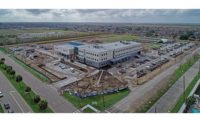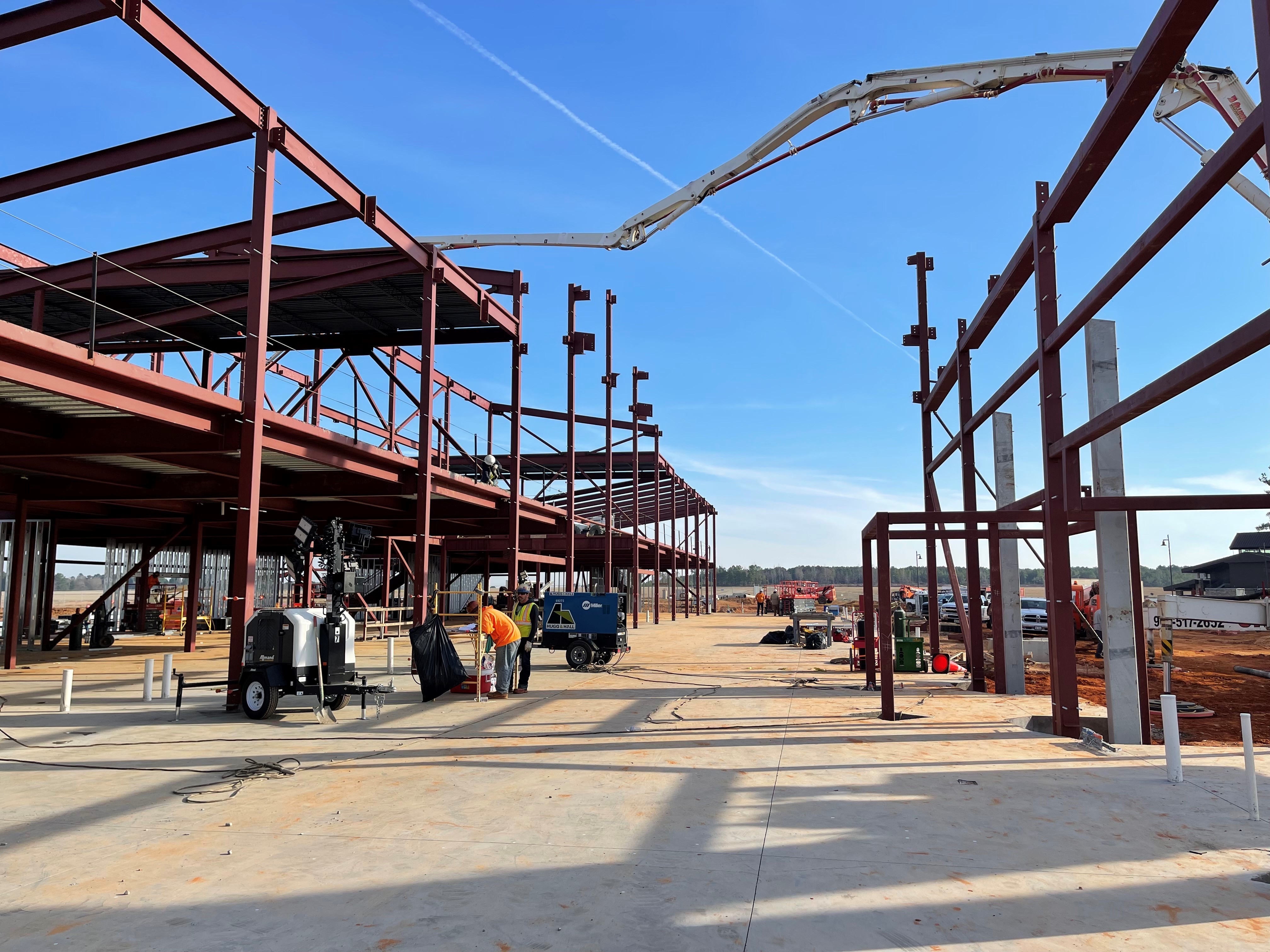Teams Use CMAR, Install Drainage Solutions on Louisiana High School

The project team elected to use cast tilt walls, which will ensure longevity and durability.
Photo courtesy of The Lemoine Co.
To accommodate a booming population, the Lafayette (LA) Parish School System (LPSS) is building its first new school in almost 50 years. The 258,000 sq-ft Southside High School in Youngsville, La.—recently named Louisiana’s fastest growing city—is on a fast-track schedule to open for the 2017-18 school year. The Lemoine Co. LLC is construction manager at risk, along with design team Abell + Crozier + Davis Architects.
“This project gives us an opportunity to develop a model of high standards for all our school facilities in the parish,” says Randy Bernard, academic specialist with the Lafayette Parish School System. “We are currently upgrading several facilities and will be breaking ground on replacement schools in the near future.”
Once a sleepy rural community, surrounded by sugar cane fields and pastures, Youngsville has seen its population increase by more than 350% since 1990. The community’s proximity to the offices of major petroleum service companies, along with easy access to the bustling North-South Highway 90/I-49 corridor, account for some of the area’s appeal. In 2015, city leaders unveiled a 10-year Master Plan for growth. One of the most critical needs for Youngsville has been a new high school. The public school system used the sale of bonds to finance the $63 million project.
Southside is situated on 100 acres. Phase I of the new school consists of two wings on either side of a three-story classroom building, featuring a library, dining facility, laboratories and collaboration spaces. Phase II includes an athletic building with two gymnasiums and locker rooms, as well as another building for theatre and music. Southside will offer students a technology-rich environment. Once school enrollment reaches capacity, Southside will be able to accommodate 2,000 students in grades 9 through 12.
This project is also the first Louisiana public school facilities to be delivered through CMAR. LPSS took this route specifically to help streamline the construction process, which allowed for a construction start four months before drawings were complete.
“Communication is a critical issue in the CMAR process,” says Andrew Sexton, operations manager with Lemoine. “With this delivery, double or triple the amount of communication and meeting rhythms are required by each stakeholder as compared to a traditional process.”
Early in in the process, well before the school’s design was completed, the team used square footage and historical data to develop real time estimates to determine options for Southside’s mechanical system. During June and July 2016, while the building pad and deep foundations were underway, the team agreed to switch to a water-cooled chiller system with higher upfront costs, but lower utilities costs long term.
“We shared our ideas and input and, together, we calculated that the water-cooled system would ultimately pay for itself within 10 years,” Sexton says. “This was a huge decision that finalized design and construction issues allowing forward progress without extending the delivery date.”
Exterior concrete cast tilt walls were also incorporated in the design. Rarely used in Louisiana, this system was chosen after the team analyzed pricing and scheduling for different structural systems. The cast tilt wall method came out as the optimum choice for a project this size, while ensuring longevity and durability.
Besides providing a new educational resource for the community, Southside may also indirectly help with drainage and flood protection in the area. When the “Great Flood of 2016” devastated 20 Louisiana parishes last August, Youngsville was among the hardest hit communities. Southside’s onsite drainage system exceeds design requirements and is set up to remove and reroute roadway run-off to nearby retention basins.
Phase I of the school project was scheduled for completion by July 28, in time for the August 9 school year start date. Phase II is expected to wrap up by November 30.
For future developments, the School Board is seeking the vote of a ½ cent sales tax proposition, which would be dedicated solely to the removal of temporary buildings at 12 schools in the district. This would include renovations to libraries and cafeterias. “We plan to incorporate technological advancement and cost-efficient sustainable resources to take our parish into the next century and ensure our students are given opportunities they deserve,” Bernard says.


